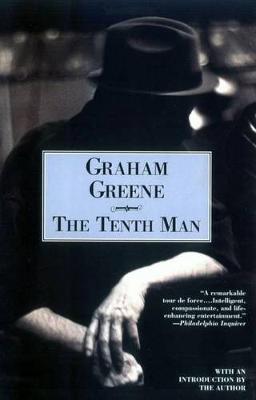Reviewed by brokentune on
The Tenth Man is not just a story but a moral experiment: A group of prisoners of war are told that as punishment for the killing of occupying forces by the local resistance movement, one in ten prisoners would be executed. It is up to the prisoners to draw lots.
From this Greene develops a tale of moral conflict, perceptions of heroism and cowardice, of pretense and being true to character, and it all starts, not with the draw, but with one of the chosen offering to buy his life in exchange for all his possessions.
I really enjoyed the premise of the story and - needless to say - Greene's writing. However, the introduction of the love story and ending of the book left me wanting more of a development of the original dilemma - Chavel having to deal with his conscience - rather than focusing the story on the ensuing love triangle and resolving all the issues in a rather convenient manner. Not that Greene does not often chose to resolve his characters' conflicts in the same manner, but in this book in particular, I felt the story itself would have offered a less clean-cut conclusion.
However, this story was written around the same time as the The Third Man, and Greene intended it to work as a screenplay, in which case a more ambiguous ending would not have worked. At least not if he needed to sell the story to a film studio.
Having read Greene's novels there is a distinct difference between early works written for film and later works, many of which were eventually turned into films. The early works, The Tenth Man included, tend to be limited in developing characters and ideas, whereas the later ones thrive on both and allow Greene's writing to develop another dimension.
"The paper lay on the floor beside him, scrawled over with almost illegible writing. He never knew that his signature read only Jean-Louis Ch … which stood of course as plainly for Charlot as for Chavel. A crowning justice saw to it that he was not troubled. Even a lawyer’s meticulous conscience was allowed to rest in peace."
Reading updates
- Started reading
- 31 July, 2015: Finished reading
- 31 July, 2015: Reviewed
